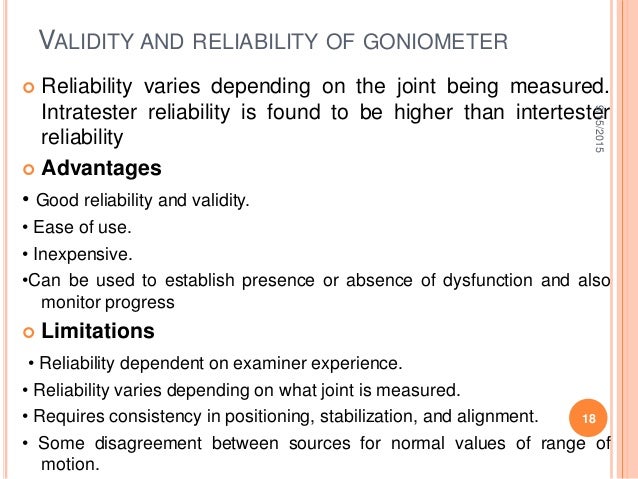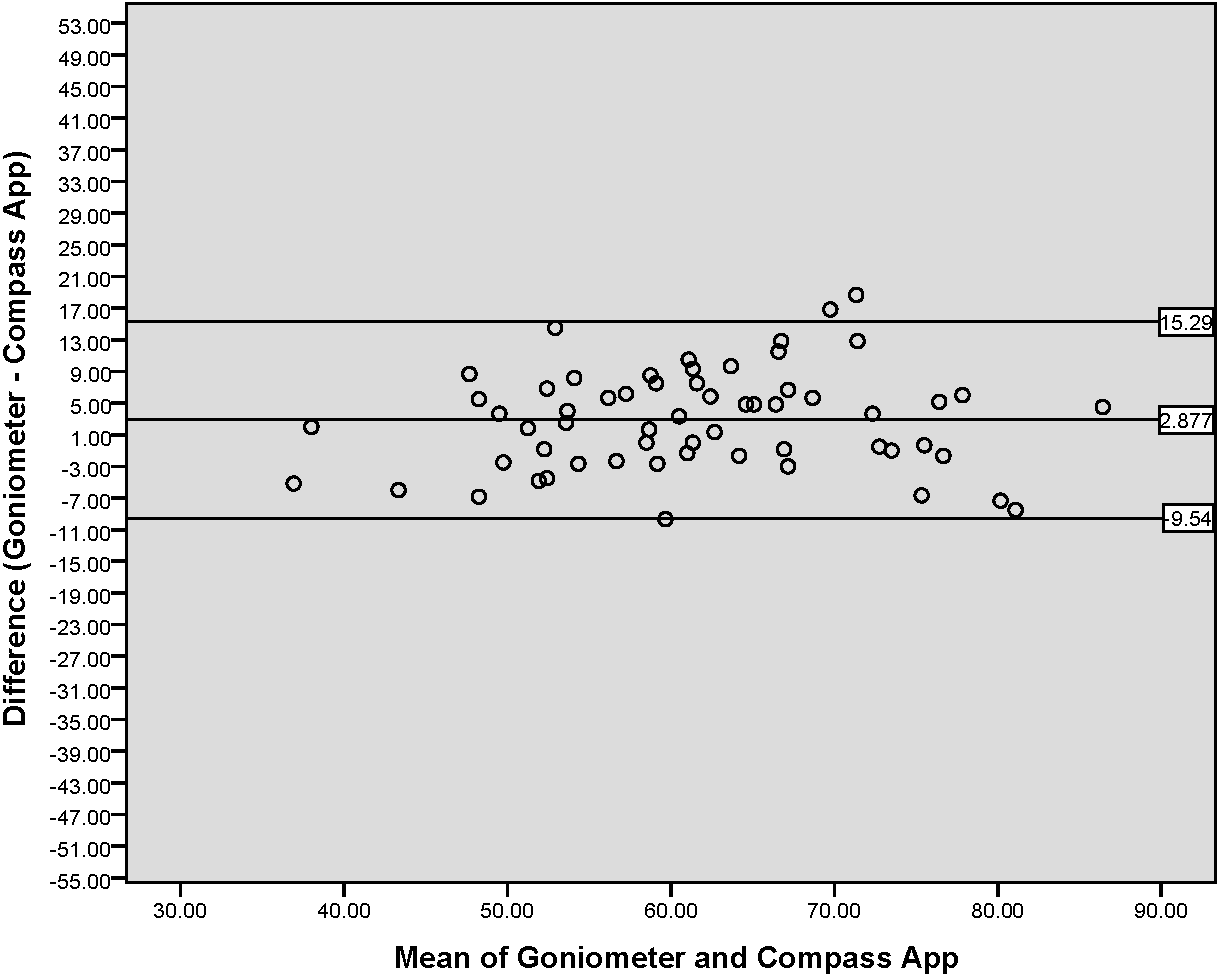

15, 17 The present study was performed to evaluate the intra-rater and inter-rater reliability of the UG for active cervical range of motion (ACROM) measurements on normal healthy subjects. Moreover, in the previous studies there were lack of qualified and experienced personnel, and standardized protocols for measurement and for performance of the motions which make it difficult to compare and use the data produced by these studies.

17 on the other hand, found moderate intra-tester and low to moderate inter-tester reliability. Yankai & Manosan, 15 however, found both inter-tester and intra-tester reliability high. Several authors have found greater intra-tester reliability than inter-tester reliability 16, 17, 19 in both clinical and research settings. Many studies have been published on the inter-tester and intra-tester reliability of the UG. 4, 7, 17 This may also be due to improper alignment of the goniometer, lack of anatomical landmarks, variability of the neutral head position and soft tissues thickness in the cervical region. 7, 16 These inconsistencies and lack of accuracy may be due to inter-tester differences in measurement technique, including differences in patient and goniometric positioning. Unfortunately, clinical measurements of the cervical ROM by UG are often inconsistent and are claimed to be less precise compared to the measurements of other body’s joints mobility. 5, 8, 9 UG, a tool used most commonly for evaluating joint ROM in the clinical settings, 7, 14, 15 comes out as a simple alternative for global use at low price. Therefore, it is very important to consider about the reliability, easiness to use and the cost of the device while choosing the most suitable measurement device. 7, 11- 13 But these equipment are not very accessible for clinical practice due to high cost and complexity for use in specific segments. Various measurement devices are available for cervical ROM evaluation, 7, 10 going from simple instruments like universal goniometer (UG) to electromagnetic 3D Fastrak measurement system or 3D ultrasound equipment. 4, 7- 9 Objective measurements aid in maintaining the patient’s interest by keeping him informed about the improvement. 6 It may help the physiotherapist to determine the diagnosis, formulate the prognosis, design the plan of care, check the progress, and evaluate the efficacy of treatment. 4, 5 Cervical ROM is frequently measured when patients having neck pain visit the physical therapy clinics. 1- 3 Normal cervical spine range of motion (ROM) is usually altered by these disorders. Disorders of the cervical spine are the leading health problems and significant cause of disability.


 0 kommentar(er)
0 kommentar(er)
